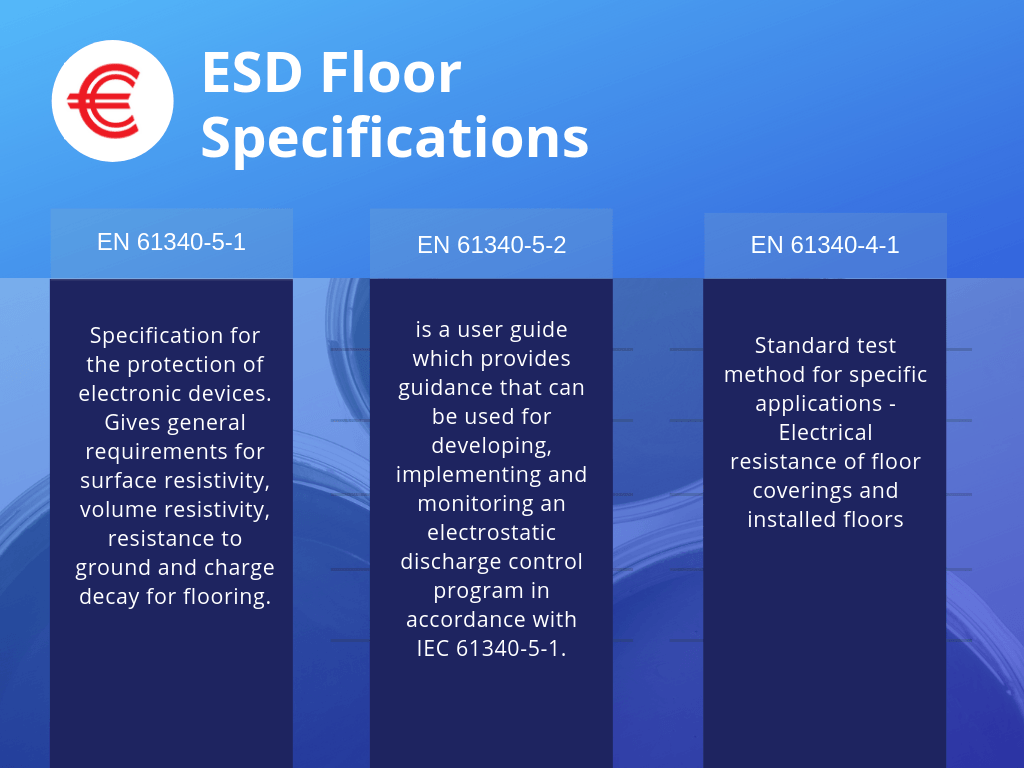ESD Floor Specification
When it comes to installing an ESD floor, the main priority is to remove static and reduce the risk of damage caused by static shock. There are worldwide specifications in existence which give you comfort that your ESD floor choice is suitable for purpose.
Different industries have varying requirements and standards vary from country to country. Many industries or organisations have their own internal standards for anti-static flooring. Requirements may relate to the anti-static or conductive nature of the flooring material to be used or to the anti-static characteristics of the finished floor.
The current European specification for the protection of electronic devices is:
EN 61340-5-1:2016
This is the current standard for the electronics industry in 22 European countries. EN 61340-5-1 gives general requirements for surface resistivity, volume resistivity, resistance to ground and charge decay for flooring.
EN 61340-5-1 requires ESD flooring to be less than 1 x 10(9) ohms . The same standard requires a person/footwear/flooring to be less than 3.5 x 10(7) ohms (resistance in series of operator plus footwear plus floor).
Requirements may be different for the munitions industry, explosive handling areas, hospitals, solvent stores etc.
IEC/TR 61340-5-2 Electrostatics – Part 5-2: Protection of electronic devices from electrostatic phenomena. EN 61340- 5-2 is a user guide which provides guidance that can be used for developing, implementing and monitoring an electrostatic discharge control program in accordance with IEC 61340-5-1.
IEC 61340-4-1 Electrostatics Part 4-1: Standard test method for specific applications – Electrical resistance of floor coverings and installed floors
ANSI/ESD S20.20 is the American equivalent of EN 61340-5-1 and provides guidelines to protect electrical and electronic parts, assemblies and equipment from electrostatic discharge.
All Electroguard paints meet the EN 61340-5-1 flooring limit tested per EN 61340-4-1

